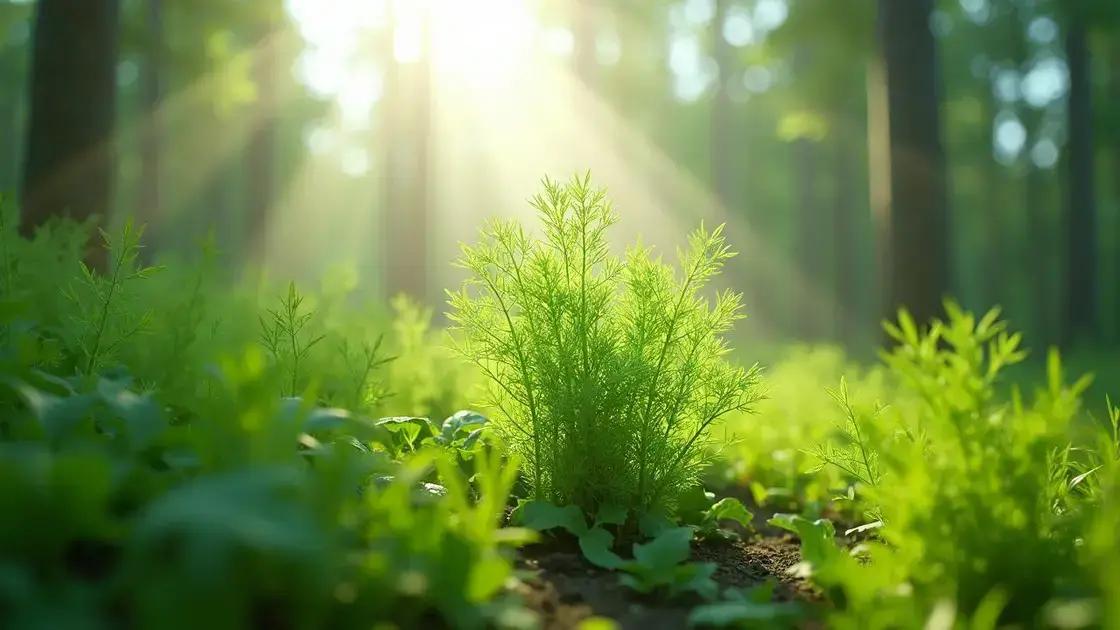How to Take Care of Dill Plant: 7 Essential Tips for Beginners
How to take care of dill plant? Growing dill in your garden or indoors can be a rewarding experience. With a few essential guidelines, you can ensure that your dill thrives and adds flavor to your dishes. Explore what it takes to cultivate your dill plant successfully, from the right soil to sunlight needs.
Table of Contents
ToggleUnderstanding dill plant soil requirements
Understanding dill plant soil requirements is crucial for achieving healthy growth. The right soil provides essential nutrients and drainage for your dill plants, ensuring they flourish whether in pots or garden beds. Let’s explore the key factors to consider when selecting the ideal soil for your dill.
Ideal soil composition for dill plants
- Well-draining soil: Dill plants prefer soil that allows excess water to escape.
- Light and fluffy texture: A mixture of loamy and sandy soils works best.
- Organic matter: Compost or well-rotted manure can enhance nutrient content.
Assessing soil pH levels
Dill thrives in soil with a pH level between 6.0 and 7.5. You can easily test your soil using a pH meter or test kit available at garden stores. Adjusting your soil pH can be achieved through:
- Adding lime to raise pH levels (make it more alkaline).
- Incorporating sulfur to lower pH levels (make it more acidic).
Fertilization and nutrient needs
While dill plants don’t require heavy fertilization, ensuring that they have access to the necessary nutrients can greatly affect growth. Here are some guidelines:
- Applying a balanced, slow-release fertilizer before planting can help establish robust roots.
- Use organic fertilizers, such as fish emulsion or compost tea, every few weeks during growing season for optimal results.
Water retention and drainage
Proper watering techniques are essential for maintaining soil moisture while avoiding waterlogging. Consider these tips:
- Water deeply but infrequently, allowing the top few inches of soil to dry out between waterings.
- Implementing mulch can help retain moisture and prevent weeds.
Exploring indoor gardening techniques can also provide insights on creating optimal soil environments for your dill plants.
The importance of soil in plant health
Healthy soil not only nourishes your dill plants but protects them from pests and diseases. Investing time in understanding the requirements of your dill’s soil will yield abundant and flavorful harvests.
Optimal sunlight exposure for your dill plant

Optimal sunlight exposure for your dill plant is essential for ensuring vibrant growth and robust flavor. Dill thrives in full sun, which means it requires a minimum of 6 to 8 hours of direct sunlight each day. Understanding the light conditions your dill plants need will help you cultivate them successfully.
Understanding sunlight preferences
- Dill plants prefer full sun exposure for optimal growth.
- While they can tolerate partial shade, too little light can lead to spindly stems and weak flavor.
- Watch for signs of insufficient sunlight, such as leggy growth or slow development.
Choosing the right location outdoors
When planting dill outdoors, select a location that maximizes sunlight exposure. Consider the following:
- Observe the area throughout the day to ensure it receives adequate sun.
- Avoid planting near tall structures or trees that may create shade.
- If possible, position your dill near a south-facing wall or fence, as it can reflect sunlight and enhance growth.
Supplemental lighting for indoor dill
If you’re growing dill indoors, artificial lighting may be necessary, especially in winter months or low-light environments. Here are tips for effective indoor lighting:
- Use full-spectrum grow lights to mimic natural sunlight.
- Position lights 6 to 12 inches above the plants and adjust as they grow.
- Provide at least 12 to 16 hours of light daily for optimal growth.
For more tips on enhancing indoor plant growth, consider exploring indoor gardening techniques.
Adjusting to seasonal changes
As seasons change, the amount of sunlight can vary. Here are ways to adapt:
- During summer, ensure that dill does not experience excessive heat; consider providing some afternoon shade.
- In winter, be vigilant about the exposure as days are shorter; adjust indoor lighting accordingly.
Providing the right amount of sunlight not only fosters healthy dill plants but also leads to stronger flavors and more abundant harvests. With these guidelines, you’re on your way to mastering the sunlight needs of your dill!
Effective pest control methods for dill plants
Effective pest control methods for dill plants are vital for maintaining healthy and vigorous growth. Dill is susceptible to pests like aphids, spider mites, and caterpillars. Implementing a proactive approach to pest management will help protect your dill and enhance its flavor.
Identifying common pests
Before applying pest control methods, it’s essential to recognize which pests are affecting your dill plants. Some common culprits include:
- Aphids: Small green or black insects that cluster on the leaves, sucking sap.
- Spider mites: Tiny arachnids that create fine webs and cause yellowing of leaves.
- Caterpillars: Larvae of butterflies and moths that chew on the leaves.
Preventive measures for pest control
Prevention is the best first line of defense against pests. Following these strategies can minimize pest infestations:
- Rotate your crops annually to disrupt pest life cycles.
- Maintain healthy soil and promote plant vigor through proper fertilization.
- Encourage beneficial insects, like ladybugs, that naturally prey on harmful pests.
Natural solutions to control pests
If pests do appear, consider these effective natural methods:
- Neem oil: A natural pesticide that disrupts pest growth and feeding.
- Insecticidal soap: Targets soft-bodied insects like aphids without harming plants.
- Essential oils: Oils such as peppermint can repel pests when diluted and sprayed.
Chemical treatments and their precautions
In cases of severe infestation, chemical treatments may be necessary. Consider the following:
- Choose targeted pesticides to minimize environmental impact.
- Apply chemicals during the evening to reduce harm to beneficial insects.
- Follow manufacturer instructions closely for safe and effective use.
For additional insights on cultivating healthy plants, check out exploring indoor gardening techniques.
Monitoring and maintaining plant health
Regularly inspect your dill plants for any signs of pests. Early detection is crucial for effective management. Keeping plants well-watered and fed will also help them withstand pest pressures.
In conclusion
Caring for dill plants requires attention to various factors, including soil requirements, sunlight exposure, and effective pest control methods. By understanding and implementing these essential tips, you can ensure your dill thrives and enhances your culinary creations. Remember, nurturing your plants goes beyond the basics—it’s about fostering a healthy environment for them to flourish. For more insights, check out tips on enhancing your indoor garden.

